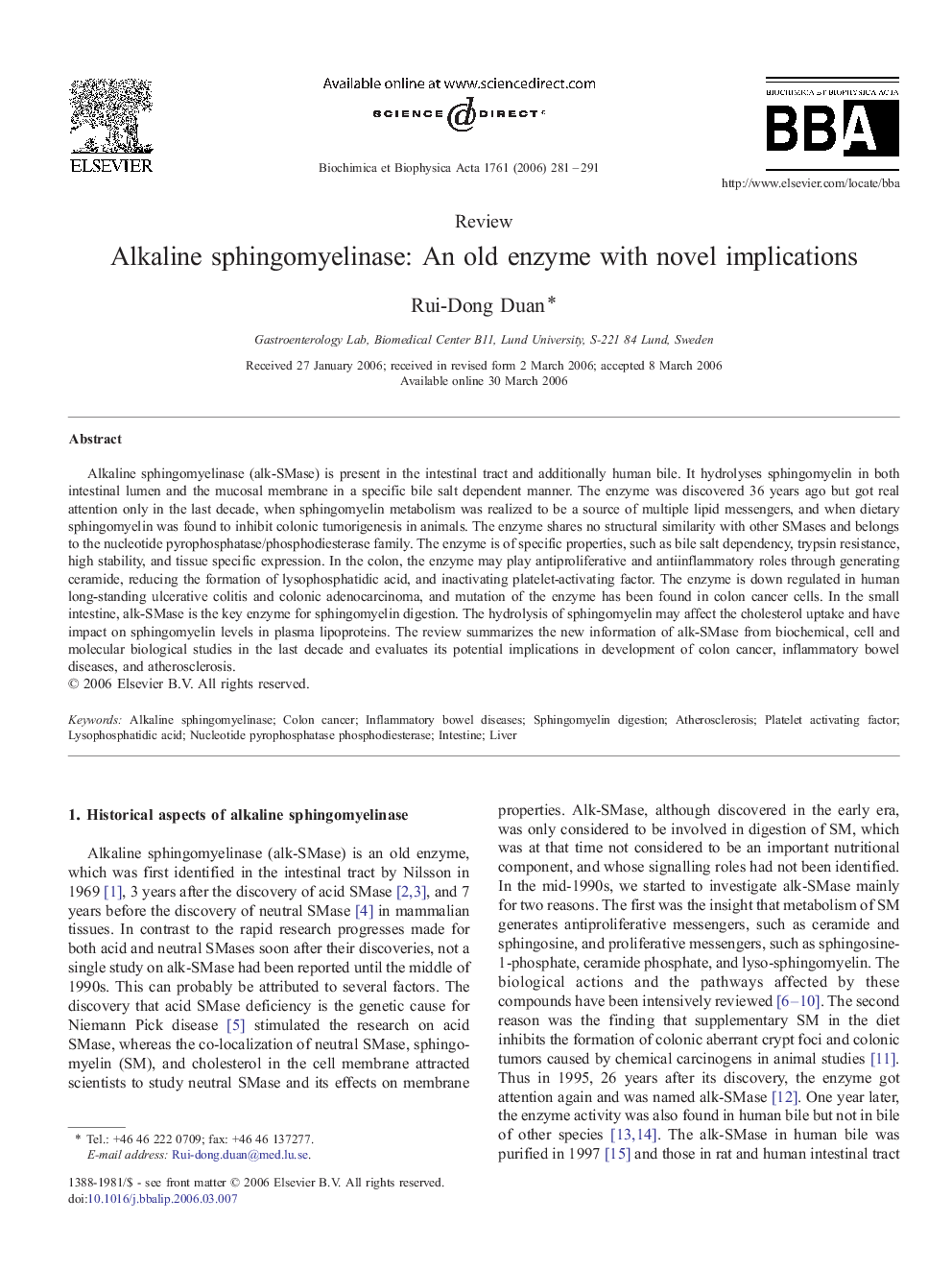| Article ID | Journal | Published Year | Pages | File Type |
|---|---|---|---|---|
| 1950343 | Biochimica et Biophysica Acta (BBA) - Molecular and Cell Biology of Lipids | 2006 | 11 Pages |
Alkaline sphingomyelinase (alk-SMase) is present in the intestinal tract and additionally human bile. It hydrolyses sphingomyelin in both intestinal lumen and the mucosal membrane in a specific bile salt dependent manner. The enzyme was discovered 36 years ago but got real attention only in the last decade, when sphingomyelin metabolism was realized to be a source of multiple lipid messengers, and when dietary sphingomyelin was found to inhibit colonic tumorigenesis in animals. The enzyme shares no structural similarity with other SMases and belongs to the nucleotide pyrophosphatase/phosphodiesterase family. The enzyme is of specific properties, such as bile salt dependency, trypsin resistance, high stability, and tissue specific expression. In the colon, the enzyme may play antiproliferative and antiinflammatory roles through generating ceramide, reducing the formation of lysophosphatidic acid, and inactivating platelet-activating factor. The enzyme is down regulated in human long-standing ulcerative colitis and colonic adenocarcinoma, and mutation of the enzyme has been found in colon cancer cells. In the small intestine, alk-SMase is the key enzyme for sphingomyelin digestion. The hydrolysis of sphingomyelin may affect the cholesterol uptake and have impact on sphingomyelin levels in plasma lipoproteins. The review summarizes the new information of alk-SMase from biochemical, cell and molecular biological studies in the last decade and evaluates its potential implications in development of colon cancer, inflammatory bowel diseases, and atherosclerosis.
